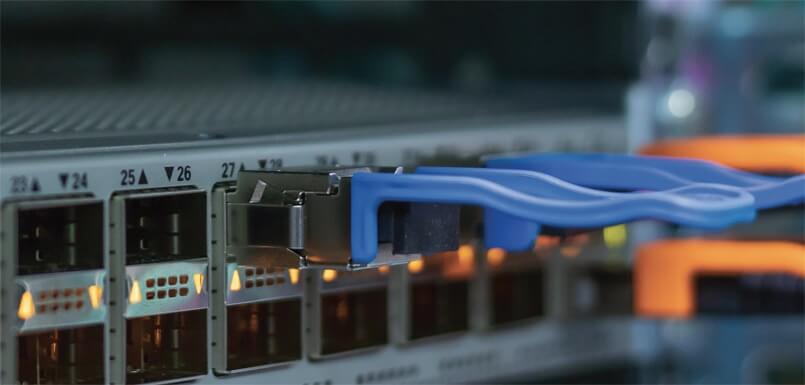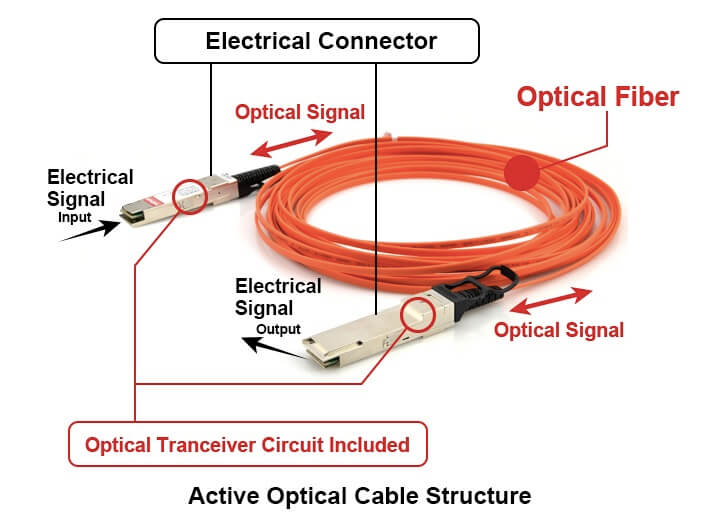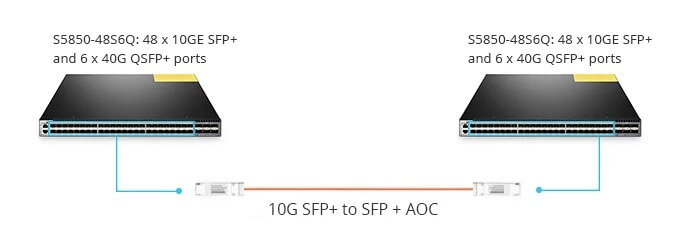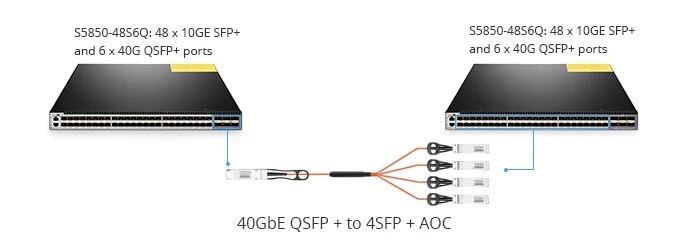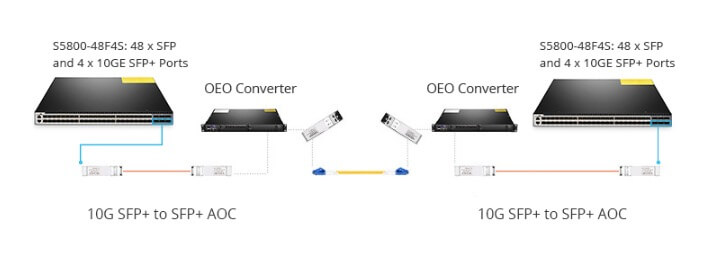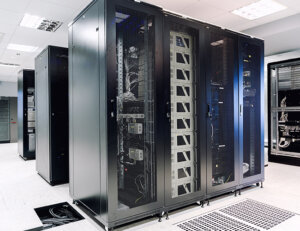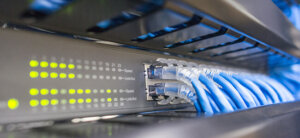Data centers are at the heart of modern computing and communication systems. They are critical for businesses, governments, and organizations that rely on high-performance computing, cloud computing, and big data processing. These facilities require high-speed and reliable data transmission solutions to ensure that the data is processed and transmitted efficiently. Active Optical Cables (AOCs) are becoming increasingly popular in data centers as they provide a high-speed, long-distance data transmission solution. In this blog post, we will explore the use of AOCs in data centers and the benefits they offer.
What are Active Optical Cables (AOCs)?
Active Optical Cables (AOCs) are a type of cabling solution that combines fiber optic technology with electronics to provide high-speed data transmission over long distances. They use optical fibers to transmit data signals over long distances and incorporate electronic chips to boost and receive the signals. The electronic chips are embedded in the cable to enhance the transmission of the signals over the fiber optic cable. The optical fibers transmit the signals using light pulses, which are received by the electronic chips and converted into electrical signals.
AOCs are designed to handle high-speed data transfer, making them ideal for applications that require fast and reliable data transmission. They can transmit data at speeds of up to 100Gbps, which is significantly faster than traditional copper cables. They are also immune to electromagnetic interference, which means they are not affected by interference from other electrical devices or equipment. This makes them ideal for use in noisy environments where electromagnetic interference is a concern.
Structure of Active Optical Cables (AOCs)
Active Optical Cables (AOCs) are a type of cabling technology that uses optical fibers to transmit data signals over short to medium distances. AOCs typically consist of four main components:
- Optical fiber: AOCs use thin strands of optical fibers to transmit data signals over long distances without losing signal strength or clarity.
- Transmitter: The transmitter convertselectrical signals into optical signals that are transmitted through the optical fiber.
- Receiver: The receiver converts the optical signals back into electrical signals.
- Control circuitry: AOCs include circuitry to regulate the optical signal strength, as well as to manage the power usage and other parameters of the cable.
In addition to these core components, AOCs may also include various other features, such as connectors for attaching to devices, protective casing for the optical fibers, and other hardware for managing and securing the cable.
Types of Active Optical Cables
Active Optical Cables (AOC) are available in several varieties on the market. These include 10G SFP+ AOC, 25G SFP28 AOC, 40G QSFP+ AOC, 56G QSFP+ AOC, 40G QSFP+ to 4x SFP+ breakout AOC, 40G QSFP+ to 8x LC breakout AOC, 100G QSFP28 AOC, 100G QSFP28 to 4x SFP28 breakout AOC, and 120G CXP AOC.
Why are Active Optical Cables (AOC) Ideal for Data Centers?
Data centers require high-speed and reliable data transmission solutions to ensure that the data is processed and transmitted efficiently. AOCs provide several benefits that make them ideal for data center applications, including:
- High-Speed Data Transfer: AOCs are designed to handle high-speed data transfer, making them ideal for data center applications that require fast and reliable data transmission. They can transmit data at speeds of up to 100Gbps, which is significantly faster than traditional copper cables.
- Longer Distance Transmission: AOCs can transmit data over longer distances than traditional copper cables, making them ideal for data center applications that require long-distance data transmission. They can transmit data over distances of up to 100 meters, which is significantly longer than the maximum distance of traditional copper cables.
- Immunity to Electromagnetic Interference: AOCs are immune to electromagnetic interference, which means they are not affected by interference from other electrical devices or equipment. This makes them ideal for use in data centers where there are many devices and equipment that generate electromagnetic interference.
- Lower Power Consumption: AOCs consume less power than traditional copper cables, which makes them more energy-efficient. This is important in data centers where energy consumption is a significant cost.
Lightweight and Flexible: AOCs are lightweight and flexible, which makes them easy to install and maneuver. They are also much thinner than traditional copper cables, which makes them ideal for use in data centers where space is limited.
Use of AOC Cable in Various Scenarios
AOC cable is utilized to interconnect top-of-row (ToR) switches with end-of-row aggregation switches, as well as to connect ToR switches to storage subsystems that are located beyond the direct attach copper (DAC) limit of 3-7 meters. The following three scenarios depict specific applications for AOC cable.
- Scenario 1: AOC cable is used to directly connect two switches.

- Scenario 2: The breakout AOC cable provides a highly cost-effective means of interconnecting within and across adjacent racks. The following illustration displays a 40GbE QSFP+ to 4 x SFP+ AOC cable that is connected to a 40G QSFP+ port switch on one end and to four 10G SFP+ port switches on the other.

- Scenario 3: For long-haul transmission between two switches, it is recommended to utilize a suitable solution consisting of single-mode patch cables, OEO converters, and AOC cables. This approach facilitates seamless integration of different fiber types by converting multi-mode fiber to single-mode fiber.

Conclusion
Active Optical Cables (AOCs) are becoming increasingly popular in data centers as they provide a high-speed, long-distance data transmission solution. They are ideal for data center applications because they can transmit data at high speeds over long distances, and they are immune to electromagnetic interference. AOCs are commonly used in data centers to connect servers, switches, and other networking equipment, and they are ideal for applications such as high-performance computing, storage area networks (SANs), video and audio streaming, and virtualization.
As technology continues to advance, we can expect to see even more widespread adoption of AOCs in data centers. As data centers continue to grow and evolve, the need for fast and reliable data transmission will become even more critical. AOCs are well-positioned to meet this need and provide an essential component of the modern data center.
When selecting AOCs for use in data centers, it is essential to choose a reputable and reliable supplier. AOCs are a significant investment for data center operators, and it is important to ensure that they are of high quality and will perform reliably over an extended period. Look for a supplier with a proven track record of providing high-quality AOCs and excellent customer service. Contact us if you need Active Optical Cables (AOCs).

